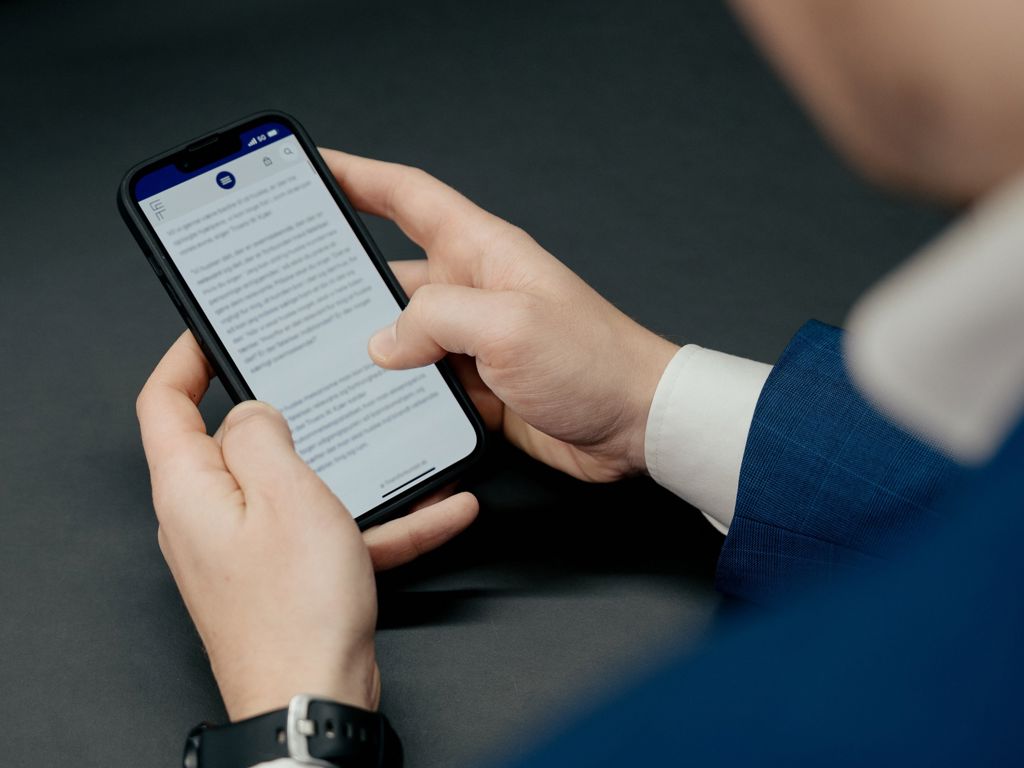How to write a good CV
A good CV could be the difference between landing a job and keeping on searching. Get advice about how to make a CV that will impress your future employer
The CV plays a key role when businesses are recruiting new employees.
Businesses use the CV to quickly evaluate your professional qualifications and see if you fit the job. A preliminary scan is done to filter out applications and CVs, which are therefore not read. Usually, it doesn’t even take 10 minutes. Your CV is therefore an annex to your application, serving to document the contents of your application.
What your CV must include:
- Work experience
While all work experience, education and training are relevant, use only one line for things you completed many years ago. Elaborate your work experience within the last couple of years. - Courses, leisure time and skills
Not all courses, leisure time activities and skills are necessarily relevant. Include what is relevant to the job at hand. - What you are capable of
Don’t just list what you have worked with or trained for but include the skills you have acquired based on your experience and training.
Some examples of skills:
’Sales’
- Canvassing
- Off-plan sales
- ’Finances’
- Accounting
- Invoicing
- ’Web programming’ with ’asp, php’ in a sub-group
- ’Web design’ with ’html, css’ in a sub-group
- Your skill level
In order to match expectations, it may be useful to indicate the skill level for each of your competencies.
Examples of skill levels
Master: The things you master make up your most important professional skills. For instance, whereas you master your own language, you know foreign languages. Other words for “master” include “expert” and “extensive experience”.
Know how to: As a graduate, you know how to do your trade, but as you gain more work experience, your come closer to mastering it. Other words for “know how to” include “to a higher degree” and “some experience”.
Have tried: For example, the IT programs that you have tried a couple of times and know what are used for. Other words for “have tried” include “to a lesser degree”, “knowledge of” or “at user level”.

A good personal statement makes all the difference
Eight out of ten employers will read your CV before even looking at your application. As many as 83 per cent will read what’s at the top of your CV, namely the summary or professional profile, also called a personal statement, personal profile or career objective. It is therefore worth your while spending time on writing a good personal statement.
A good personal statement should include the following:
Title: Your professional title with experience in years.
The value you can add to the job: With more than 15 years of experience within……..and……, I have gained profound knowledge of……and understanding of how to work with…………, thereby contributing to….
The effect of my WHY: I am driven by...and believe that it is through x and y that (results are achieved)
My HOW: I achieve this by...
Values: I am motivated by seeing... Or: I am strongly convinced that....
My motto: My motto is: “xxx”, for example. My motto is: “Only triple-checking will do!”
The right layout for your CV
There is no ONE layout for your CV, but there are some general rules that are worth following, which apply regardless of purpose:
- Master: The things you master make up your most important professional skills. For instance, whereas you master your own language, you know foreign languages. Other words for “master” include “expert” and “extensive experience”.
- Know how to: As a graduate, you know how to do your trade, but as you gain more work experience, your come closer to mastering it. Other words for “know how to” include “to a higher degree” and “some experience”.
- Have tried: For example, the IT programs that you have tried a couple of times and know what are used for. Other words for “have tried” include “to a lesser degree”, “knowledge of” or “at user level”.
3 good tips
- Spend time on formatting and layout
Layout and formatting are important for making sure the reader can gain a quick overview. Microsoft Word offers access to a number of CV templates. - Keep an appropriate length
If all the details you decide to include are both relevant and interesting, then your CV isn’t too long. By contrast, if the reader gets lost or bored, then the CV is too long.If you do not have a great deal of work experience, 1-2 pages are appropriate. If your work experience is longer, 2-3 pages are appropriate. - Consider the relevance of including a photo. While some businesses consider it an advantage to include a photo in your CV, others find it invading or unnecessary. Use your judgement for the job and firm at hand.










